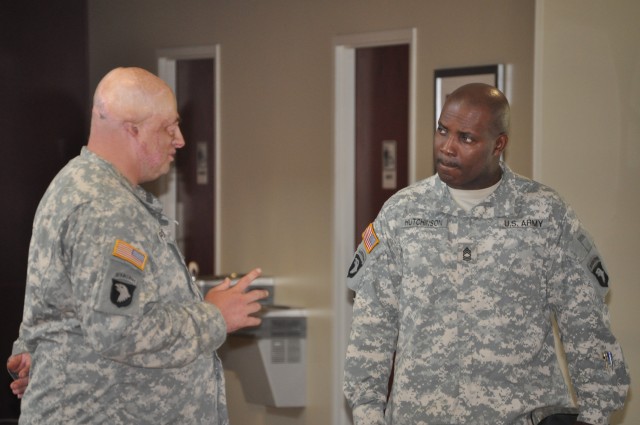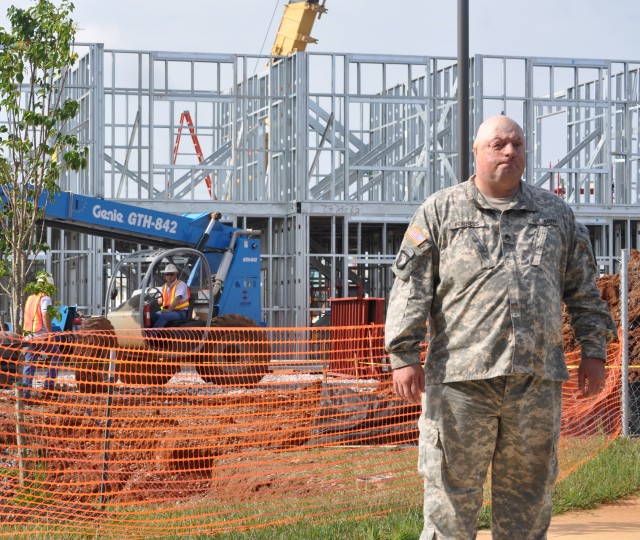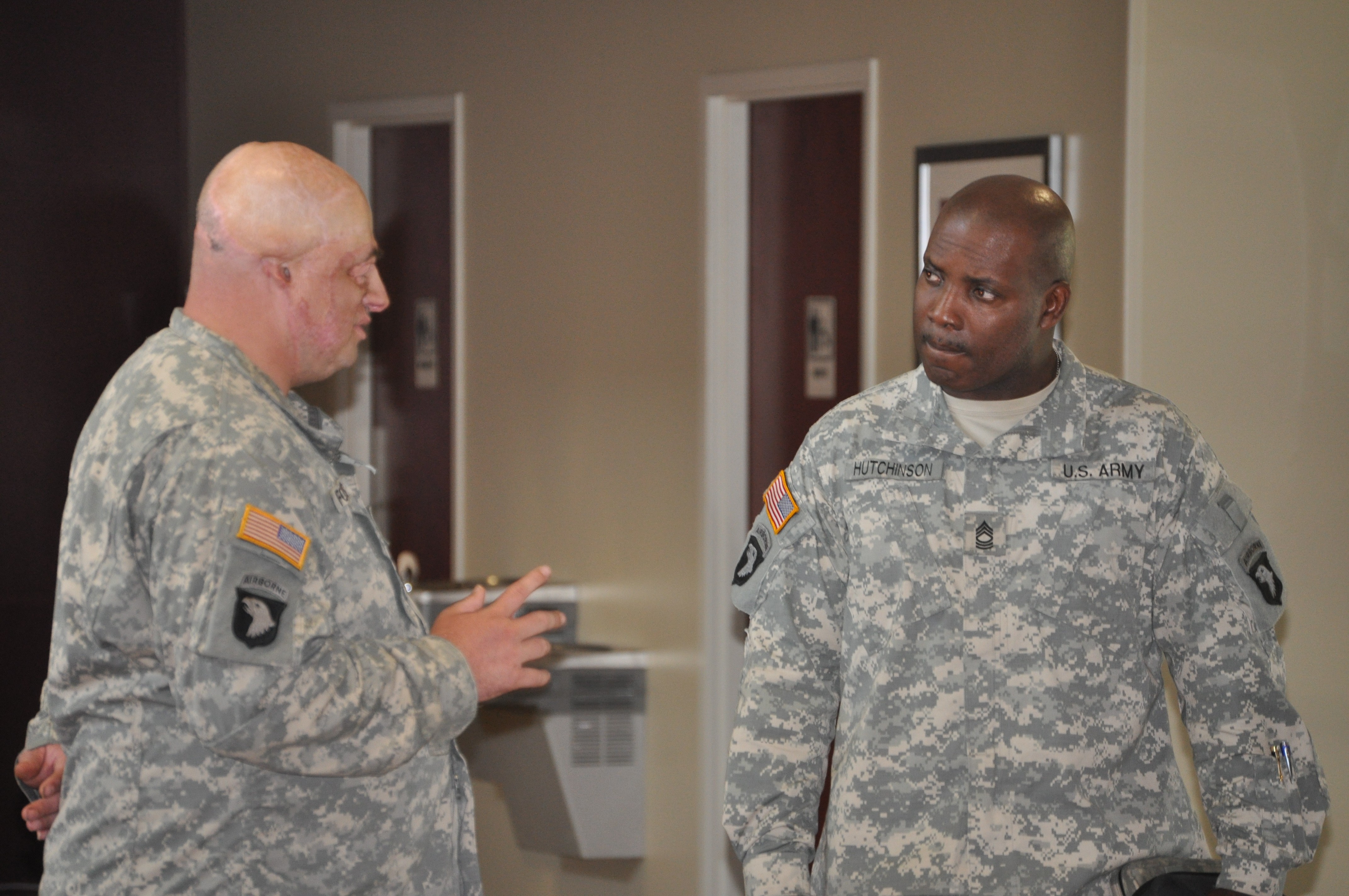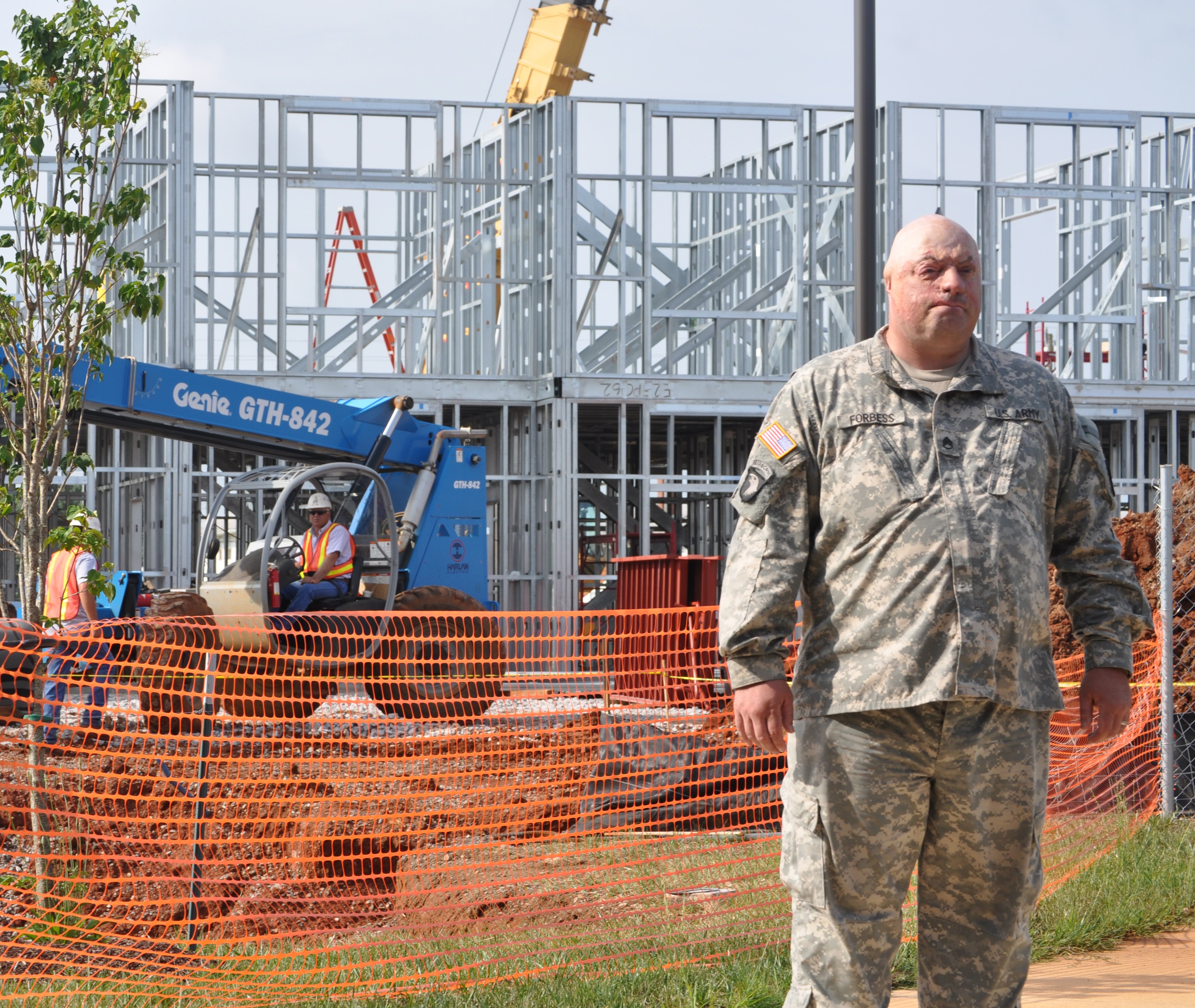FORT CAMPBELL, Ky. (June 25, 2010) - The Soldier and Family Assistance Center was already abuzz Friday with Soldiers filling out paperwork for in-processing, even though opening day was moved to July 27.
But one name might be more memorable among all the visitors to the new building.
As liaison and the Noncommissioned Officer In Charge for the Warrior Transition Battalion, Staff Sgt. Josh Forbess has seen, firsthand, the other side of tragedy and the need for a place like the SFAC.
"That's why I love this job," Forbess said. "I've seen almost every kind of injury. As someone who's been there, done that, we can help these [Soldiers]."
His hope is that the new facility as well as his own story reminds them that healing is possible.
In the years since a 2003 Blackhawk crash that left him with scars, following facial reconstruction and in a coma for eight weeks, Forbess stands as a symbol of resiliency to other Soldiers.
Despite living with the "hidden wounds" of traumatic brain injury and post-traumatic stress disorder, Forbess presses on, and even offers a word of hope to others who might be facing the same situation.
"Hopefully when Soldiers see me, with my injuries so visible, they can see that there can be life after something like that," Forbess said, adding that it's not about him. "But hopefully they can use me as an inspiration."
Surviving the accident left him with severe burns, head trauma and temporarily unable to walk. He was the only Soldier to survive from his team.
"Our two Blackhawks collided during our patrol over Mosul," Forbess said. "The 101st lost 17 Soldiers that day and I was one of the lucky five survivors."
Now, as the days count down to the SFAC unveiling, he finds that working with wounded Soldiers is a mission he's been called to since his recovery began.
Still, an accident like his doesn't allow one to ever completely break free of the memories, he believes, but said that everyone can reach a personal peak in the healing process.
"It's difficult any time you experience catastrophe in life that requires emotional adjustment," Forbess said. "It's huge for the combat wounded to get to the acceptance stage of everything."
For him, the acceptance factor means coming to terms with what happened and getting rid of the "what if's," figuring out what triggers negative thoughts and finding hope that you can live a functional life.
"You hear about being fully recovered, but there is no fully recovered," Forbess said. "There's optimal recovery, but I will not be the same as I was before. Not a day goes by that I don't think about my boys that died in that helicopter with me."
Coping with the weight of an event like this, Forbess feels he has come to a place of dealing with the tragedy, but believes there's no moving completely beyond it.
The facility doesn't offer on-site counseling, but he reminds Soldiers that the SFAC's goal is to transition Soldiers either out of the military or back to the fight.
Personal choice led him to remain on active duty status, but finding his current job with WTB after overcoming his difficulties, he says, "I enjoy the job and our mission here, the service we provide."
His efforts have gone to helping Soldiers who might have similar stories and he still finds volunteer time with places like Fisher House or Building Homes for Heroes.
"You don't volunteer because you love the accolades," Forbess said. "You do it because you love it."
He sees the facility as more than a community hub for Soldier support, but as a point where so much ties together and Soldiers can find help in all kinds of ways.
"I like to call this the nucleus, because really, [a lot] links up to this place," Forbess said. "You have to go through us to get where you're going."
One method of assistance Forbess mentioned is the popular horse therapy program that offers physical and psychological healing through horseback riding.
Soldiers with WTB can link up with these and other programs through the facility, with MWR program personnel to help in that area.
Acting SFAC Director Mike Britton agreed, saying the facility will serve as an entry gate to the rest of the WTB complex to be finished in the second half of 2011.
Strategically located across from Blanchfield Army Community Hospital, Britton said the facility was designed for that kind of unity in mind, though both are separate.
"The shortest distance to the hospital is to walk right through the SFAC," Britton said. "It's designed to be the center of the battalion's life."
Focusing on a name rather than a rank, it's the human side of the project that Britton said is the thrust of WTB.
The other side to the human element, Britton said, is the enjoyment he's had watching work teams come together for the purpose of SFAC, whether it be construction work crews or furniture installers.
"People were here all week," Britton said. "Eight-man teams. 10-hour days. It's fascinating, and all these people directly or indirectly are impacting to enrich the lives of those we're serving."




Social Sharing